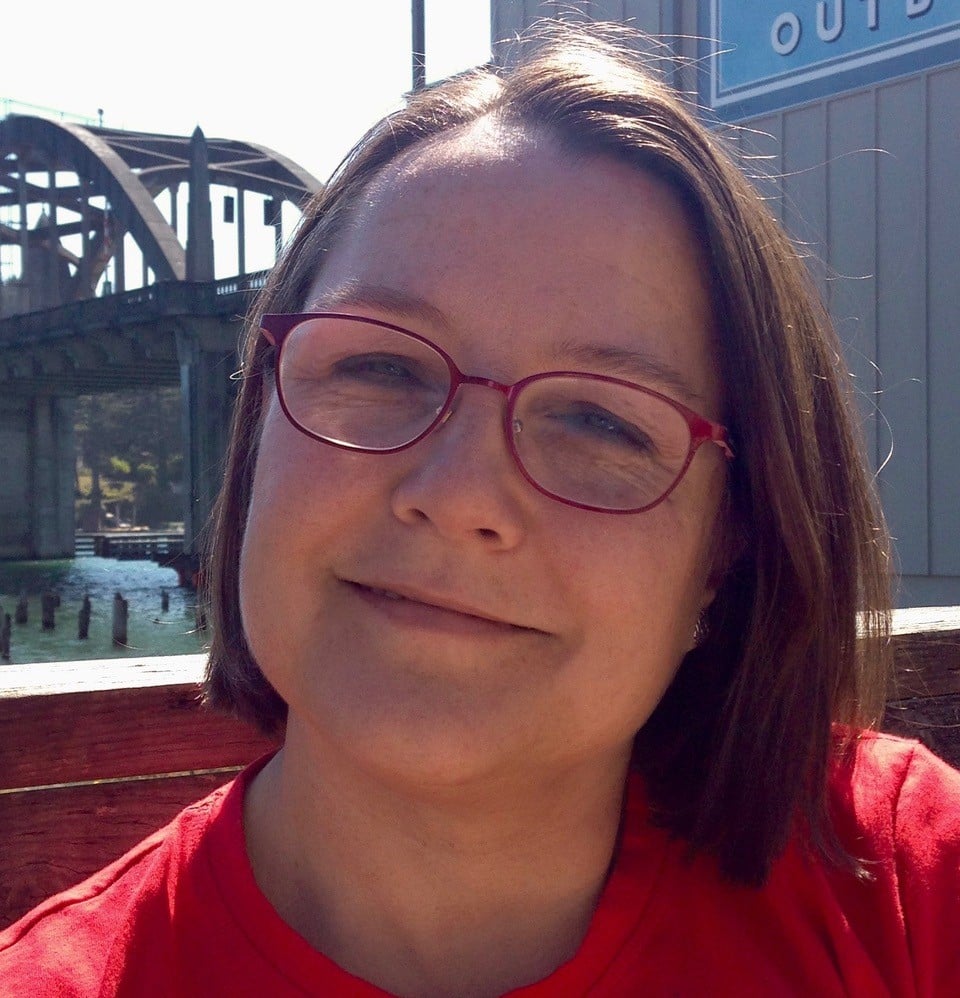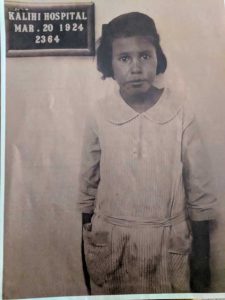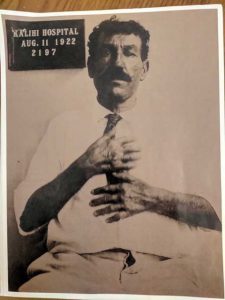A couple of weeks ago, I received a message from a woman curious to know why her grandmother was in my online family tree. This is hardly a unique occurrence, since I enjoy tracking down fairly distant family connections. In this case, however, our connection was very close (at least by my standards): her mother was the great-aunt of my first cousin’s husband. I even personally saw my correspondent’s first cousin at my cousin’s wedding!
My husband, father, and I were able to represent the Mainland contingent of our family at her wedding on the Big Island of Hawaii. It was a fascinating experience, complete with island customs such as leis,[1] a whole pig roasted in an imu,[2] poi,[3] and miniature kahilis[4] as party favors.
What I recall hearing at the time was that the groom’s father was full Native Hawaiian, and when he rose to stand during introductions at the reception, I was totally convinced. His substantial physique and overall appearance looked just like pictures of nineteenth-century Hawaiian monarchs. However, I’m not the first family historian to discover that ethnic attributions are not always correct.
It can be tricky doing Hawaiian genealogy, since most public records are not available online. Thankfully, at least the U.S. census reports are. Hawaii became an American territory prior to 1900, so one can currently trace people through as many as five censuses … assuming the spelling is close to correct (which it rather frequently is not). It was through these census records that I discovered more than one surprise.
The first was that my cousin’s father-in-law was not full Native Hawaiian. His maternal grandfather, John de Freitas, was born on the Portuguese island of Madeira, and his maternal grandmother, Virginia Gonsalves, was born on the Hawaiian island of Maui shortly after her parents arrived from Portugal. All of a sudden, my cousin’s father-in-law was half as Native Hawaiian as I’d thought!
The other thing I discovered was that my cousin’s father-in-law had been born on the island of Molokai, where his parents met as patients in the “Territorial Leprosarium” at Kalaupapa. To prevent him from contracting Hansen’s Disease, it appears that he was taken from his mother as an infant,[5] and then sent to live with his paternal grandfather on the Big Island, where he spent the rest of his life. I don’t know whether he ever saw his parents again; his mother died when he was ten, and his father when he was fifteen.
I quickly emailed the pictures to my cousin so that she could share them with her children; they are very likely the only images they will ever see of their great-grandparents and great-great-grandfather.
In checking over my online tree to discover how I was related to my recent correspondent, I found new information, including photographs of my cousin's in-laws! Strangely enough, someone in England was able to post their intake photos, taken when they were each brought to the Kalihi Hospital in Honolulu before being sent to the colony on Molokai. I quickly emailed the pictures to my cousin so that she could share them with her children; they are very likely the only images they will ever see of their great-grandparents and great-great-grandfather. Of course it would be lovely if the pictures had been taken under happier circumstances, but having photographs at all is little short of a miracle.
One more thing: my cousin and her daughter have done DNA testing, and needless to say, they both share many matches with me, my aunt, my other cousin, and my half-sister. But curiously enough this cousin’s daughter shares several matches with the rest of us that her mother doesn’t! Somehow my cousin’s husband is genetically related to our family. My pet theory is that he descends from Alexander Pollard Hussey of Nantucket (a distant cousin in several ways), who jumped ship and settled on the Big Island in the middle of the nineteenth century. Fourteen of his children lived to adulthood, and his descendants now number in the thousands … so that’s my story and I’m sticking to it (at least until further evidence comes to light).
Notes
[1] Flower garlands worn around the neck and/or head.
[2] Traditional underground oven.
[3] Starchy paste made of taro/kalo root.
[4] Feathered standards used by Hawaiian nobility and royalty as a sign of rank. Originally they were made from the long bones of enemy kings decorated with feathers from birds of prey!
[5] “You know, the babies that were born inside here were not allowed to stay with their parents. After the babies were born, the law said they had to be taken away to the baby nursery in Kalaupapa. They were afraid of the contact – afraid the babies would catch the disease from their parents.”
Share this:

About Pamela Athearn Filbert
Pamela Athearn Filbert was born in Berkeley, California, but considers herself a “native Oregonian born in exile,” since her maternal great-great-grandparents arrived via the Oregon Trail, and she herself moved to Oregon well before her second birthday. She met her husband (an actual native Oregonian whose parents lived two blocks from hers in Berkeley) in London, England. She holds a B.A. from the University of Oregon, and has worked as a newsletter and book editor in New York City and Salem, Oregon; she was most recently the college and career program coordinator at her local high school.View all posts by Pamela Athearn Filbert →

